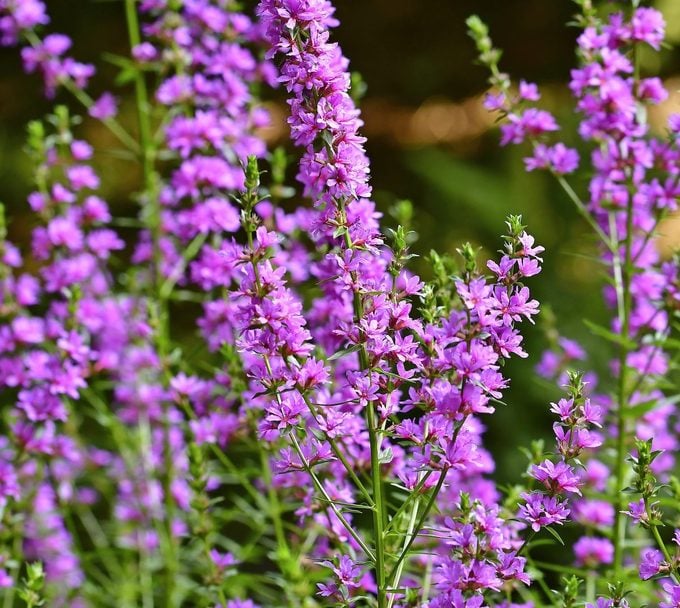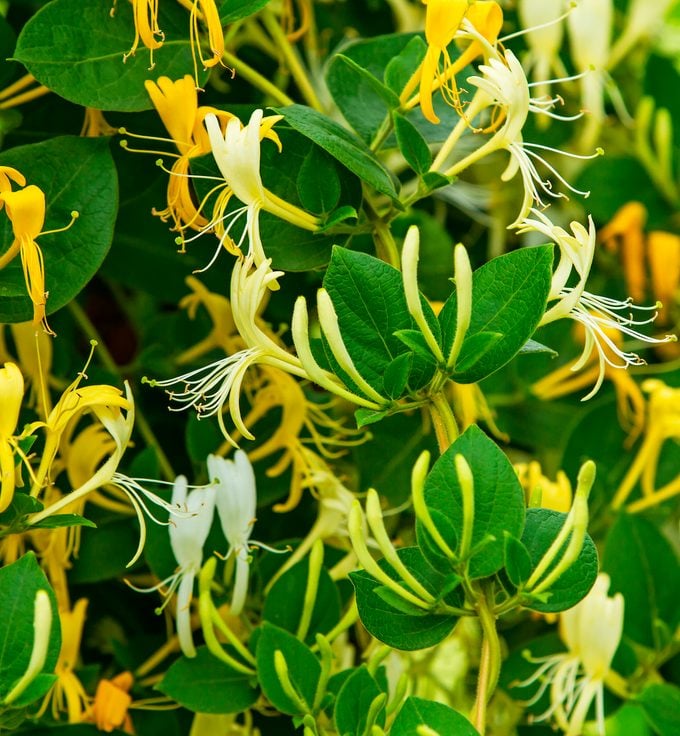How to Remove Invasive Plant Species for Good
Updated: Jul. 25, 2024
Invasives cause lots of problems in your yard and garden. Follow these tips for removing and replacing invasive plant species.
Our editors and experts handpick every product we feature. We may earn a commission from your purchases.

The tag at the garden center may say that a plant is “long blooming, low maintenance and fast growing.” If this description seems too good to be true, it’s because it sometimes is. Many plants once recommended for the garden have since left our carefully curated landscapes and invaded nearby natural areas. Once invasive plant species gain a foothold in natural spaces, they crowd out the native plants that birds, pollinators and other wildlife depend upon.
Invasives are defined as nonnative, adaptable plants that reproduce by seeds, stems and roots, which are either spread by wind, deposited by birds or carried into new areas by people, pets and visiting wildlife. Here’s a list of the worst irritating, poisonous and invasive plants.
Invasive vs Aggressive Plants
Aggressive plants are the bullies of the garden. They crowd out their timid neighbors and can quickly overtake the garden bed when left unchecked. Aggressive plants may be native or nonnative, but they’ll stay within the boundaries of your landscape. Invasive plants are usually described as nonnative plants that are also aggressive but leave a landscape’s boundaries and invade nearby natural areas. They become established and spread throughout these natural spaces, causing economic and environmental harm, and in some cases, harm to human health.
Certain invasive plants, such as honeysuckle and barberry, were once popular landscape plants due to their attributes, vigor and adaptability, which also allow them to outcompete and displace native plants. Invasive plants spread by seeds, rhizomes, roots or portions of the plant transported by birds, animals and people.
Never plant these invasive shrubs (and what to grow instead!)
How to Get Rid of Invasive Plant Species
Remove and discard small invasive plants, including the roots, as recommended by your local municipality. Many allow you to place these in the trash since they will be buried in a landfill. Avoid composting invasive plants unless your pile is hot enough (150 to 180 degrees) to kill the plants, roots and seeds.
Avoid planting these irritating and poisonous plants. Plus, did you know these six surprising flowers are invasive?
For larger tree and shrub specimens, you will need to use different techniques. You can slowly kill problem trees by either removing a 6-inch strip of bark around the base of the plant or painting the bottom 12 inches of the trunk with a recommended herbicide. Also, you can choose to cut the plant to the ground, then treat the stump with either a brush killer or total vegetation killer to prevent the stump and roots from sprouting. As always, read and follow label directions carefully.
Discover the best natural way to kill weeds. Oh and, a weed to watch out for? Canada thistle.
Remove Invasive Plant Tick Havens

Removing invasive plants also can help reduce disease-carrying tick populations. Studies have found that the presence of Japanese barberry and honeysuckle bushes create the perfect habitat for both deer and the ticks that feed on them.
Follow these tips for deer resistant plants and deer deterrents.
Watch for Invasive Plants in Décor
Door swags and wreaths can also contribute to this problem. These decorations can contain invasive plant species, such as teasel and oriental bittersweet. Their seeds may be released from the arrangements into nearby gardens, eventually making their way to natural spaces.
Is an Amur maple shrub invasive?
Find Alternatives for Invasive Plant Species
To avoid accidentally adding troublesome plants to your yard, do a bit of research before purchasing. Check with your local nature center, the Department of Natural Resources or a nearby university extension service for lists of known invasive plant species in your region. In addition, the U.S. Forest Service and Invasive Plant Atlas of the United States are two extra-helpful online resources worth looking into.
Although regulations for the sale, purchase and possession of invasive species are in place in most areas, some online sellers are not aware of, up-to-date with or concerned about following existing state and federal regulations. Just because you can purchase a plant does not mean it is allowed in your state, so check before placing your order. Don’t share aggressive or invasive plants. Your friends don’t need them, and it could lead to many more landscapes being inundated by these species.
Have fun replacing troublemaking plants with better alternatives. Select native plants suited to your yard’s growing conditions and available space. Of course, look for options that support birds, such as native trees and ornamental grasses, and help pollinators, such as butterfly host plants.
Next, learn how to get rid of the worst garden insects.




















